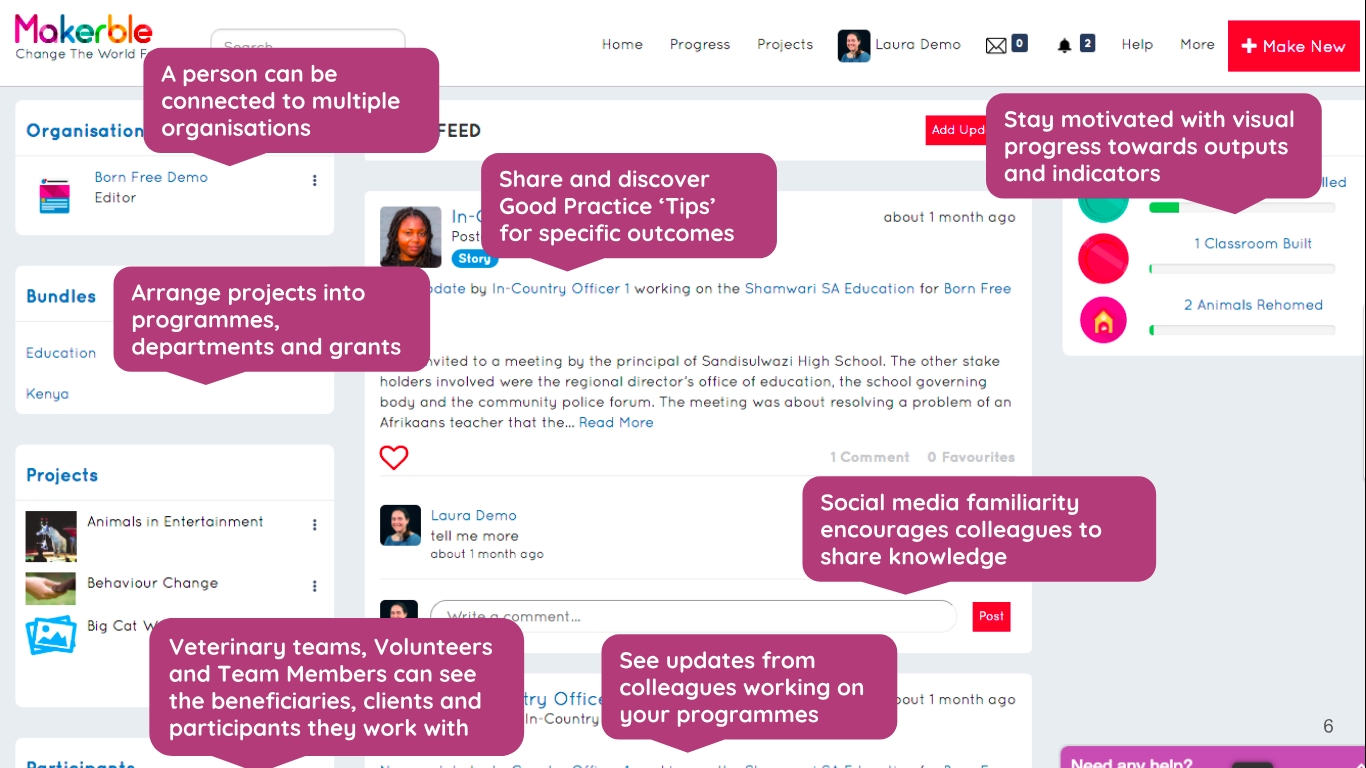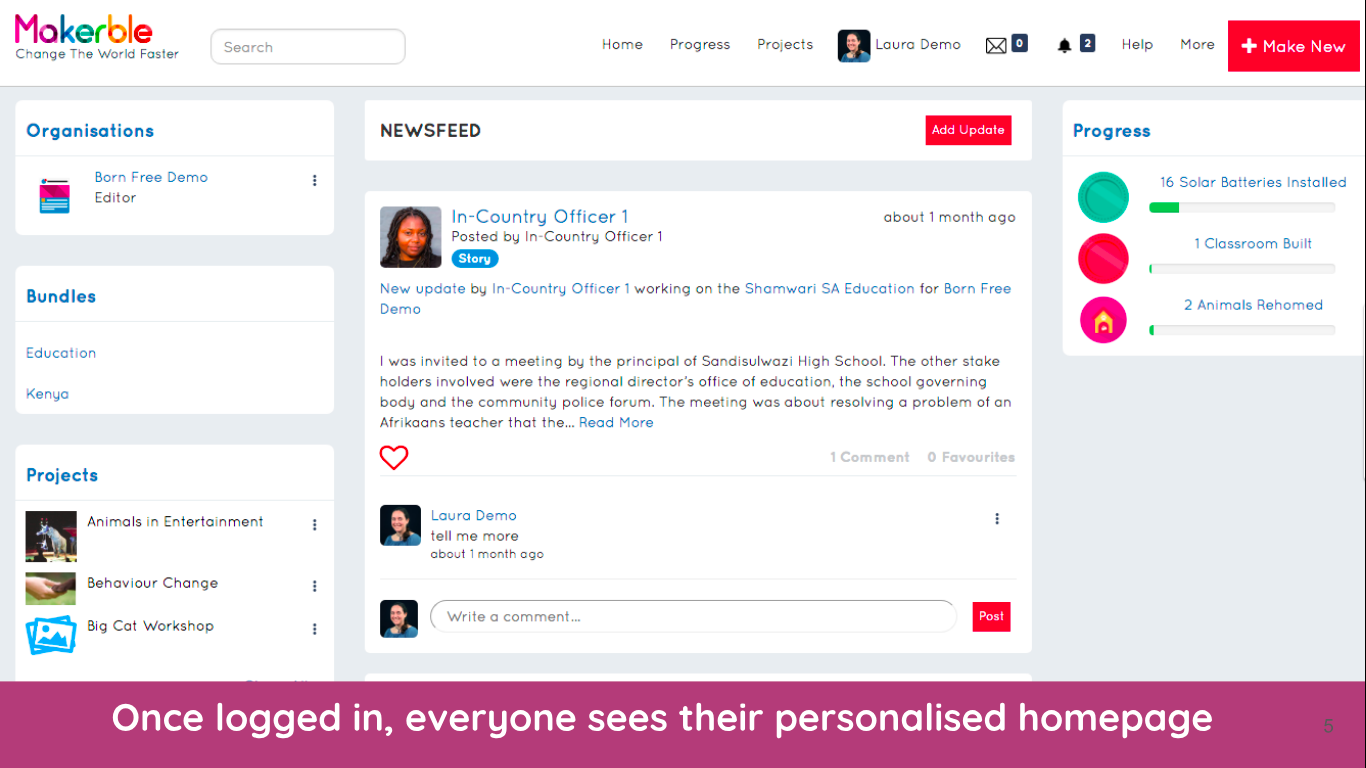Makerble Apps allow you to embed the five pillars of Collective Impact
This article outlines how you can combine the impact of multiple organisations on multiple beneficiaries in one platform
1. COMMON AGENDA
Each organisations has their own login credentials to your Makerble platform. You can achieve this by displaying a logic model to represent the Theory of Change of each strand of work. This enables each partner to easily understand the outcomes you are focused on and the impact strategy to get there.
Turn your Theory of Change into a measurable, visual, interactive logic model
Relevant features:
Discuss your Theories of Change. Add comments. Save them to your library
Apply a master Theory Of Change to all projects within an area
Set targets for each Activity output, Participation output, Outcome and Indicator
2. MUTUALLY REINFORCING ACTIVITIES
Collective Impact programmes often bring together a diverse set of stakeholders with different data collection needs. Makerble allows you to collect data in a variety of formats whether quantitative or qualitative.
See a holistic view of a single service user / client / beneficiart
Relevant features:
Each Organisation has its own Profile Page within the Impact Hub
Organisations within the same Collective Impact area can see each other’s Project Pages and thus see the activities they are doing
The Single Beneficiary View on the Makerble Impact Hub shows you the different activities and projects that each beneficiary takes part in
3. SHARED MEASUREMENT
For collective impact to work, organisations must collect data regularly which measures progress and results in a consistent way. This makes alignment and accountability easier to achieve.
A progress board on Makerble created using The Boards App
Relevant features:
APIs, Integrations and Unique Identifiers which enable the Makerble Impact Hub to connect with partner organisations’ existing databases
Intelligent dashboards which provide real-time view of progress against every output, indicator and target
Direct Data Entry into the Impact Hub is possible. Organisations that do not have an existing database can easily use the Impact Hub as their primary beneficiary management tool.
4. CONTINUOUS COMMUNICATION
Seamless communication about progress is essential for organisations within a Collective Impact area. Teams working across different organisations ought to be kept in the loop on progress as though they were within the same organisation.
View updates and comments in the Timeline
Relevant features:
Shared Updates which anyone within the network can Comment On
Ability to tag beneficiaries and colleagues within Updates
Private Messaging
Shared Library of Metrics
5. SUPPORT OF A “BACKBONE” ORGANISATION
For Collective Impact to be a success, there needs to be a backbone organisation. The Makerble provides backbone organisations with administrative tools to ensure see which KPIs are being tracked by which partners.
See the indicators being measured across each of your surveys
Relevant features:
Ability to make Project Pages public so that funders, journalists and members of the public can see the impact
Donation Buttons which allow people to support the work of the Collective Impact area in a click
Administrative Tools which enable organisations, projects and individuals to be easily added to or removed from the Collective Impact area.







